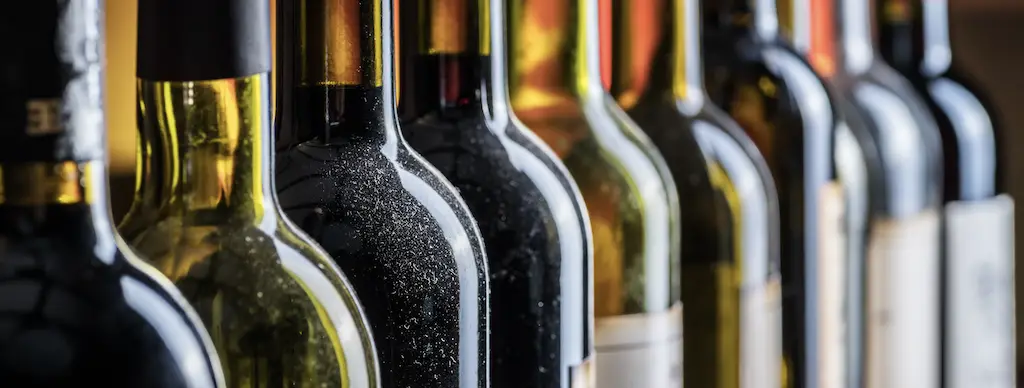The sheer variety of wines that are available in stores or restaurants can be overwhelming. There are lots of Grape varieties to know of, and there are different types of methods to turn them into wine. Understanding the general types of wines, flavors, and how they’re made can help you pick the best wine to go with a particular occasion.
There are six known types of wine and wine varietals may differ from one another depending on the category and processes involved in their production. Aside from that, there is a wide range of grape varieties that can be used to produce each kind of wine. You can find the list of Mclaren Vale wineries here.
Even if the same variety is used to create a particular wine, the taste would differ depending on where the grape was grown and harvested. In some climates, the grapes can have a richer and fruitier taste. All these, along with the juicing and fermentation process, gives each kind of wine a unique taste and texture.
Red Wines
Red wine is often defined by its tannins and dark fruit flavors, making them a good match for a wide variety of food. Tannins are compounds responsible for the mouth-drying quality and bitterness of the wine. Oak also plays a huge role in the aging process of most red wines.
Red wine can be made from a single kind of red grape or black-skinned grapes with colorless juice. You will know the type of grape used from the bottle’s label. Most of the time, the grape variety is named based on the region that they were grown. For instance, Shiraz is the variety called for grapes grown and harvested in the French Syrah in Australia.
Once the grapes are pressed at the winery, the skins of the grape are mixed with the juice. This gives the red wine its signature reddish-purple color and gives it tannins. They are then placed in oak barrels where they are added with sweet baking spice, vanilla, chocolate, and cocoa. Also, oak barrel aging softens the red wine’s tannin structure, giving it a smoother taste.
The tannins in red wine varietals serve as a preservative, which means that red wines with high levels of tannins can age longer compared to white wines. As they age, anthocyanins and tannins in red wine fall out of suspension, forming sediments at the bottom. These sediments may be eliminated by decanting.
If you want to enjoy a glass of red wine, some good varieties include Syrah or Shiraz, Malbec, Zinfandel, Cabernet Sauvignon, Cabernet Franc, and Merlot.
White Wines
These are made from green-skinned grapes with colorless juice. To make white wine, the skins of the grapes are removed before the fermentation process. This is why it has a clear and white color, unlike red wine. Enthusiasts from all around the United States like to visit this winery in Tin City to see the whole process in person. This includes the pressing of grapes, fermentation, the aging process, and bottling.
The aroma and acid structure are more apparent in white wines because they don’t have tannins that red wines have. White wines are typically made from a combination of grapes that are common in areas such as Bordeaux, Spain, and southern Rhone of France.
Most white wines are aged in a stainless-steel barrel, which helps keeps its fresh aromatics. However, Oak aging may still be used if the manufacturer wants to add flavors and aromas of vanilla, caramel, coconut, and baking spices to the wine.
In terms of taste, white wines may range from sweet to dry. Classic dry ones include the well-known French Muscadet and Italian Pinot Grigio. Riesling grapes in Germany are harvested at different ripeness levels to make various kinds of wine, ranging from dry to sweet. Chardonnay, Semillon, and Sauvignon Blanc are also well-known types of white wine.
Rosé Wines
Most people think that rosé wines are created by combining white and red wines. However, they’re actually made from red grape varieties. To produce rosé wine, one of the methods used is maceration where red grapes are pressed and the juice produced is left to soak along with the grape’s skin. The color of the wine may get darker depending on how long the grapes were soaked with its skin. That is why the color of rosé wines usually ranges from pink blush to a deep pink.
Fortified Wines
These are made by adding distilled grape spirit to a partially-fermented or fully-fermented wine. The majority of fortified wines are sweet, except for the dry Sherry style. If you like to enjoy a good glass of fortified wines, you can try Marsala, Madeira, Port, or Commandaria. These wines are sometimes aromatized with several botanicals and herbs. They’re also higher in alcohol content compared to most types of wine.
Sparkling Wines
Sparkling Wine is a special and unique type of wine that is mostly associated with high rollers. They undergo a second fermentation, usually in the bottle, which provides its bubbly quality. Many countries produce sparkling wines, but the most renowned are Prosecco and Champagne.
Prosecco is a varietal wine that’s made from the Glera grape variety. It undergoes the Charmat method where a second fermentation process happens in a huge closed tank before the wine is finally bottled.
Champagne, on the other hand, is made from a blend of several varieties such as Pinot Noir or Chardonnay. It’s made using a traditional method, which involves alcoholic fermentation as a secondary process to produce its bubbles.
Sparkling wines may range from sweet to dry and may be blended with fruity flavors like Pear and Apple along with Vanilla and nutty flavors, depending on the grape varieties used.
Dessert Wines
Dessert wines are sweet wines, which are so-called because they are literally best paired with desserts. Some examples of dessert wines include Moscato and Icewine. They are best paired with Crème Brule, chocolates, biscotti, vanilla pudding, cakes, and soft cheese.

Conclusion
Now that you know the main types of wine, it’s time to determine which one is best to be paired with your choice of meals. Knowing the different types can also help you determine which wine is best for a particular occasion.
Not all wines are created equal. So, even if two brands present themselves as red wine, make sure to read the label so you will know what varieties of grapes were used and where they were harvested from.



